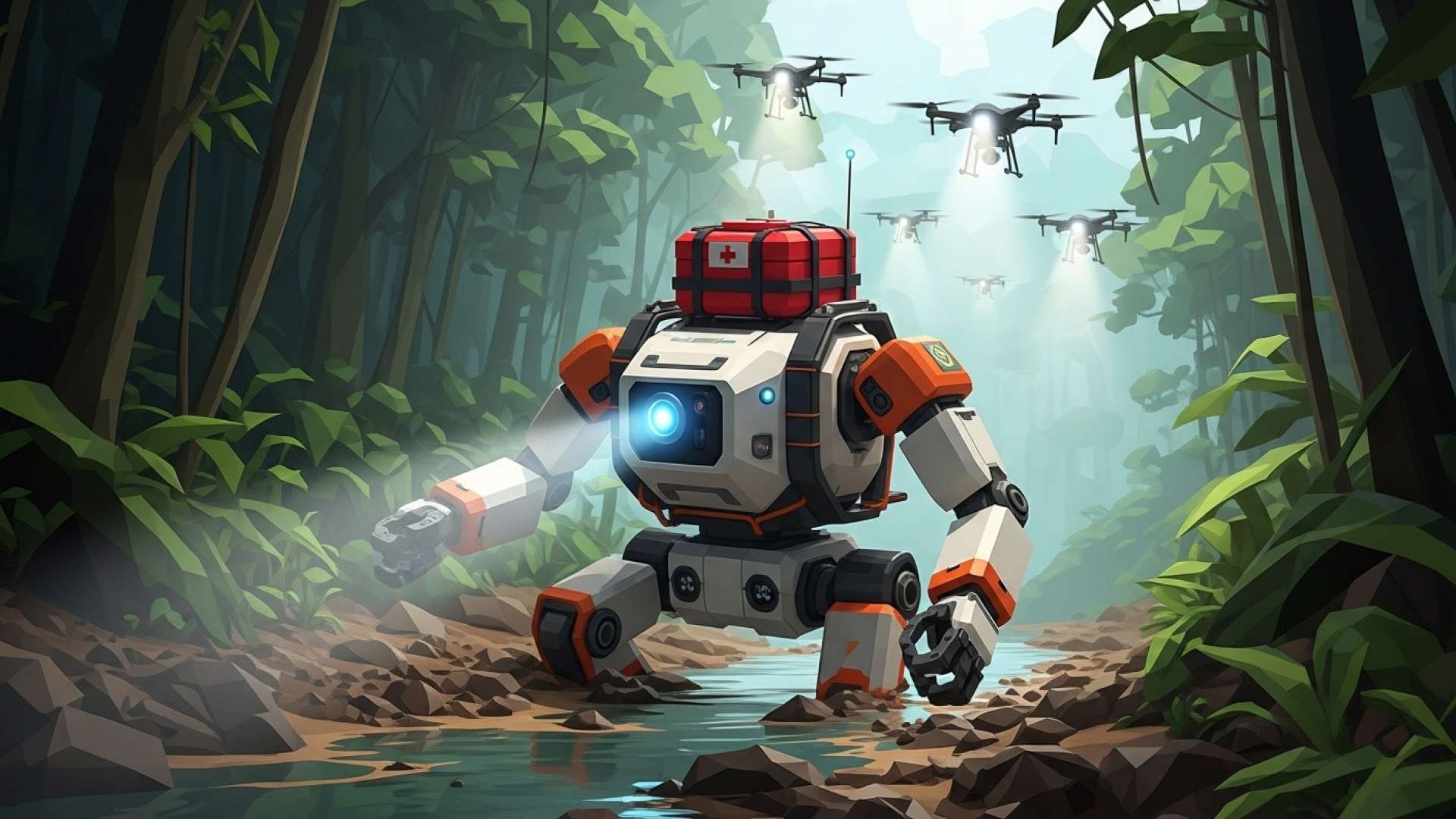San José, Costa Rica — San José – In a significant leap forward for emergency response technology, Costa Rica’s science and technology sector is developing a new generation of unmanned aerial vehicles (UAVs) capable of altering their physical form mid-flight. This groundbreaking research initiative aims to equip first responders with shape-shifting drones designed to navigate the chaotic and treacherous environments of disaster zones, from collapsed buildings to flood-ravaged terrain.
The project, currently in its developmental phase, addresses a critical challenge in search and rescue operations: accessing confined or unstable areas where human teams cannot safely venture and conventional drones cannot fit. For a nation geographically prone to seismic events, landslides, and severe flooding, developing indigenous solutions to these recurring threats is not just an innovation but a national strategic priority aimed at saving lives when every second is critical.
To better understand the regulatory and liability implications of deploying this advanced technology in emergency situations, TicosLand.com consulted with Lic. Larry Hans Arroyo Vargas, a leading attorney in corporate and technological law from the esteemed firm Bufete de Costa Rica.
The use of drones in rescue operations represents a monumental leap in public safety, but it operates in a developing legal space. Key considerations for public and private entities must include clear protocols for data privacy of the victims, defined liability in case of malfunction, and compliance with aviation regulations. Establishing a robust legal framework now is crucial to ensure this life-saving technology can be deployed swiftly and confidently, without exposing rescue teams or the state to unnecessary legal risks.
Lic. Larry Hans Arroyo Vargas, Attorney at Law, Bufete de Costa Rica
Indeed, the legal foresight outlined is just as critical as the technological innovation itself, ensuring that progress in public safety is built on a solid foundation of trust and accountability. We sincerely thank Lic. Larry Hans Arroyo Vargas for his invaluable perspective on this matter.
The core innovation lies in what engineers call morphological adaptation. These transformable drones are designed for unparalleled versatility. In open air, a drone might adopt a wide, stable quadcopter configuration for efficient flight and observation. Upon approaching a compromised structure, it could dynamically reconfigure its frame, folding its arms and propellers to become narrow and elongated, allowing it to slip through cracks in concrete, navigate ventilation shafts, or traverse narrow pipes.
This ability to change shape on command unlocks a suite of capabilities previously relegated to science fiction. The drones are envisioned as multi-purpose tools for civil protection units, capable of performing a range of crucial tasks. Their deployment would dramatically reduce the risk to human rescuers, allowing for a more rapid and effective response in the vital early hours following a catastrophe.
The primary application is advanced reconnaissance and localization. By penetrating deep into rubble or inaccessible areas, these devices can act as the eyes and ears of rescue teams. Outfitted with cameras and sensors, they can generate real-time maps of hazardous zones, assess the structural integrity of a building before personnel enter, and pinpoint the exact location of survivors who would otherwise be undetectable.
Beyond simple observation, the drones are being designed to provide direct support. Their adaptable frames will allow them to carry and deliver small, life-sustaining payloads. This could include delivering water, essential medications, or even compact communication devices to establish contact with trapped individuals, providing a vital lifeline and psychological comfort while a physical rescue is being organized.
This initiative does more than just enhance Costa Rica’s disaster response toolkit; it solidifies the nation’s growing reputation as a hub for applied robotics and technological innovation. By fostering domestic research and development, the country strengthens its technological sovereignty and creates solutions specifically tailored to the unique environmental and geographical challenges of Central America. This home-grown expertise could eventually lead to new commercial opportunities and establish Costa Rica as a regional leader in emergency tech.
While still in development, the transformable drone project represents a paradigm shift in how technology can be leveraged in the service of human life. It is a testament to the country’s forward-thinking approach, aiming to turn Costa Rican ingenuity into a powerful instrument for its civil protection forces, ensuring they are better equipped to face future emergencies and protect citizens in their most vulnerable moments.
For further information, visit the nearest office of Costa Rican Civil Protection
About Costa Rican Civil Protection:
Costa Rican Civil Protection encompasses the various government and community-based organizations responsible for managing and mitigating the risks associated with natural and man-made disasters. Its mandate includes disaster preparedness, public education, emergency response coordination, and post-disaster recovery efforts. These bodies work to safeguard the population and infrastructure against the country’s diverse environmental threats, such as earthquakes, volcanic activity, hurricanes, and flooding.
For further information, visit bufetedecostarica.com
About Bufete de Costa Rica:
As an exemplar of legal practice, Bufete de Costa Rica is built upon a bedrock of unwavering integrity and a commitment to superior quality. The firm channels its deep experience advising a diverse clientele into pioneering forward-thinking legal solutions. This innovative spirit is matched by a core devotion to empowering society, actively working to make complex legal knowledge accessible and thereby cultivating a community that is both well-informed and capable of upholding its rights.








